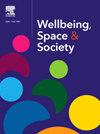邻里“双重劣势”与城市内城区和增长区儿童发展
IF 2.2
Q2 GEOGRAPHY
引用次数: 0
摘要
我们研究了都市化——居住在内陆、中部、外围或增长区——是否与儿童的发育脆弱性有关。我们还探讨了社区“双重劣势”的影响,概念上是指生活在社区劣势较高的外围或增长区,这与儿童的发展脆弱性有关。城市化水平和儿童发展之间似乎没有关系,但毫不奇怪,生活在最贫困地区的儿童更有可能发展脆弱。总的来说,生活在市中心最弱势地区的儿童的发展结果最差。因此,调查城市化对儿童发展影响的研究需要考虑邻里不利因素。本文章由计算机程序翻译,如有差异,请以英文原文为准。
Neighborhood ‘double disadvantage’ and child development in inner city and growth areas
We examined whether urbanicity – living in inner, middle, outer or growth areas – was associated with children's developmental vulnerability. We also explored effects of neighborhood ‘double disadvantage’, conceptualised as living in an outer or growth area with high neighborhood disadvantage, was associated with children's developmental vulnerability. There seemed to be no relationship between the level of urbanicity and child development, but unsurprisingly children living in the most disadvantaged areas were more likely to be developmentally vulnerable. When taken together, children living in inner city most disadvantaged areas had the poorest developmental outcomes. Consequently, research investigating the impact of urbanicity on child development needs to account for neighborhood disadvantage.
求助全文
通过发布文献求助,成功后即可免费获取论文全文。
去求助
来源期刊

Wellbeing Space and Society
Social Sciences-Social Sciences (miscellaneous)
CiteScore
2.70
自引率
0.00%
发文量
46
审稿时长
124 days
 求助内容:
求助内容: 应助结果提醒方式:
应助结果提醒方式:


